Wildlife Wednesday: Insect Friends in the Garden
A couple of were working out in the herb garden behind the Nature Center building (the Henshaw House) a few days ago, digging in the soil and pulling out weeds, and we noticed several animals living or spending time in the garden as well. This week, we thought we’d give you a little survey of some of the creatures that are currently moving around the herbs.
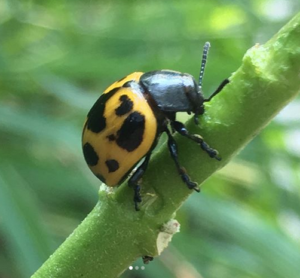 Most people who grow Mexican Milkweed in their gardens expect Monarch Butterflies, and even the tiny yellow milkweed aphids, on their milkweed plants, but we were surprised to notice, a couple of years ago, that our herb garden milkweed had also attracted bright yellow and black Milkweed Leaf Beetles (Labidomera clivicollis). Like monarch caterpillars, these round conspicuous beetles feed on the poisonous leaves of the milkweed, and are therefore toxic to predators, as well. The
Most people who grow Mexican Milkweed in their gardens expect Monarch Butterflies, and even the tiny yellow milkweed aphids, on their milkweed plants, but we were surprised to notice, a couple of years ago, that our herb garden milkweed had also attracted bright yellow and black Milkweed Leaf Beetles (Labidomera clivicollis). Like monarch caterpillars, these round conspicuous beetles feed on the poisonous leaves of the milkweed, and are therefore toxic to predators, as well. The  beetles come on black and yellow, black and red, and black and orange.
beetles come on black and yellow, black and red, and black and orange.
There were a number of butterflies, but the 2 that were the most conspicuous were the Gulf Fritillary (Agraulis vanillae, above) and the Cloudless Sulphur (Phoebis sennae, right), as well as a few Monarchs. Gulf Fritillaries are not related to other fritillary butterflies, but are actually a kind of Heliconian, or longwing butterfly. The larvae feed on passion vines, and they keep emerging through the summer and fall in this area until low temperatures prevail. Cloudless Sulphur caterpillars feed on legumes, and both migrate here from the North and continue to emerge here into the Fall.
Ea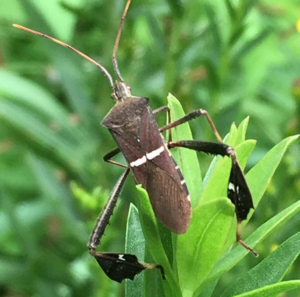 stern Leaf-footed Bugs (Leptoglossus phyllopus) are one of 3 common leaf-footed bugs that are found in our park throughout the year. We’ve seen the adults, and the red wingless nymphs prowling around plants in the garden. They feed on plants by piercing them with a straw-like proboscis and sucking juices out of the plant. The inject chemicals into the plants to aid in feeding, and these secretions may be somewhat toxic to the plant. In small amounts, this isn’t harmful, but in large numbers may kill the plant.They are harmless to people, but they may release a foul smelling substance when bothered.
stern Leaf-footed Bugs (Leptoglossus phyllopus) are one of 3 common leaf-footed bugs that are found in our park throughout the year. We’ve seen the adults, and the red wingless nymphs prowling around plants in the garden. They feed on plants by piercing them with a straw-like proboscis and sucking juices out of the plant. The inject chemicals into the plants to aid in feeding, and these secretions may be somewhat toxic to the plant. In small amounts, this isn’t harmful, but in large numbers may kill the plant.They are harmless to people, but they may release a foul smelling substance when bothered.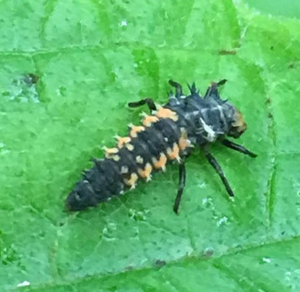
Another small creature that we found all over the herb garden were Asian Many-spotted Ladybird Beetle (Harmonia axyridis) larvae. They of course look nothing like their red black spotted parents, but just like their parents, they are voracious predators, feeding mainly on aphids and other tiny plant sucking insects. They are a non-native invasive species, and negatively impact native ladybug populations. As with most ladybugs, they are toxic, and this is one of the few ladybugs (even as larvae) that may bite if handled.
Though the temperatures are dropping, its still possible to see some of these creatures in our gardens, and perhaps even in your own garden at home. If you get a chance some time soon, drop by and see what you can find.
Thanks for joining us this week, and see you soon!
Eric Duran
Staff Naturalist
Photographs by Eric Duran


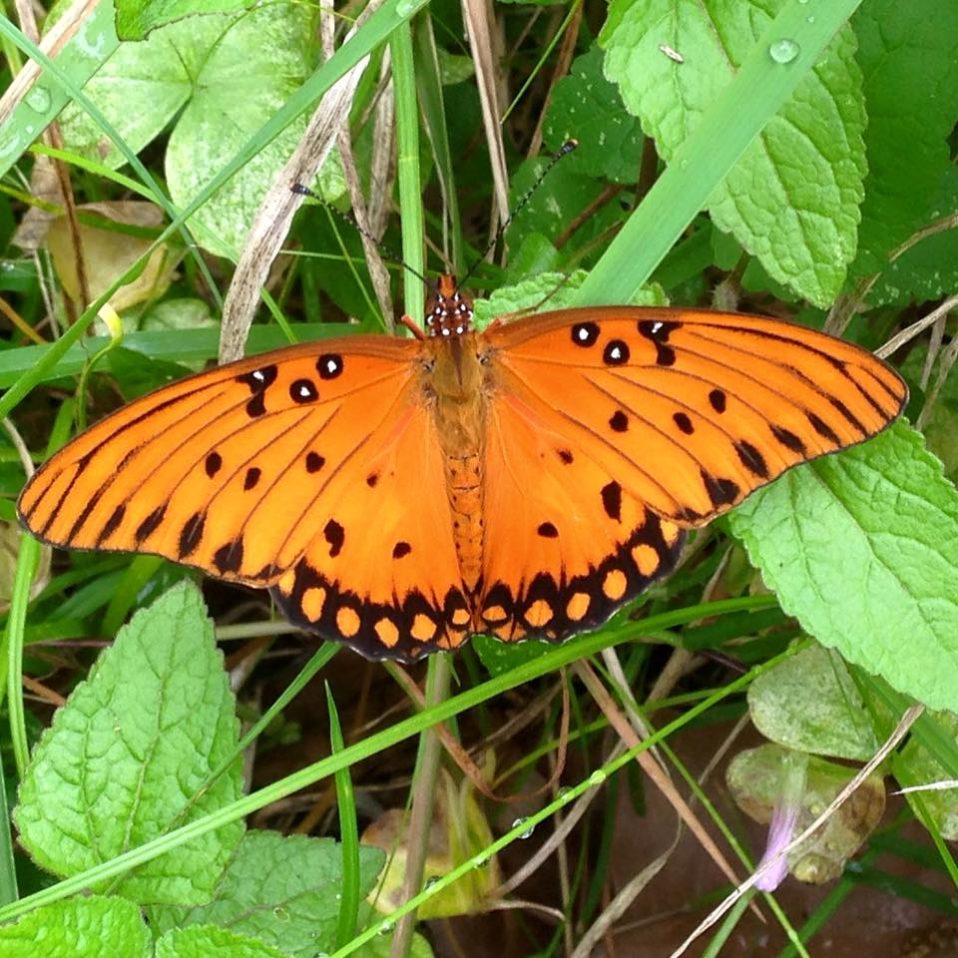
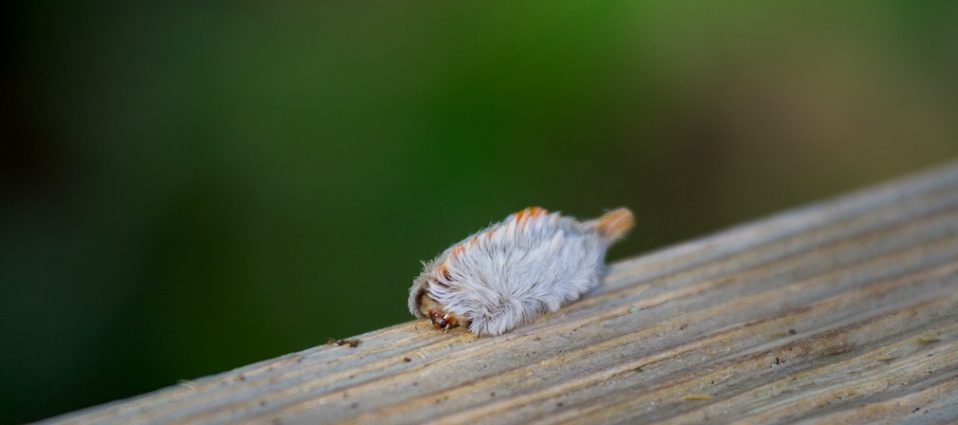
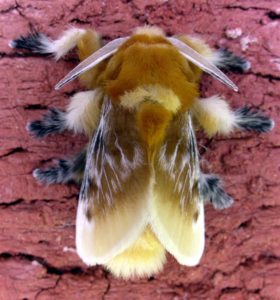
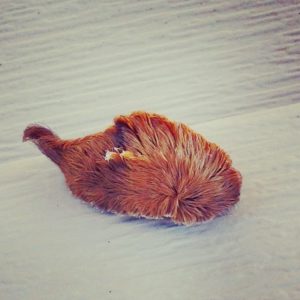 The most infamous of our stinging caterpillars is the Asp or the caterpillar of the Southern Flannel Moth (Megalopyge opercularis, pictured right). Asps usually emerge from their eggs in mid to late Autumn, and are commonly found in or near hardwood trees, shrubs, and vines. They feed on the leaves of these plants, and wander around constantly, looking for food, and eventually for decent locations to make their cocoons. They may be various shades of brown and gray, with a fur ridge down the middle of the back.
The most infamous of our stinging caterpillars is the Asp or the caterpillar of the Southern Flannel Moth (Megalopyge opercularis, pictured right). Asps usually emerge from their eggs in mid to late Autumn, and are commonly found in or near hardwood trees, shrubs, and vines. They feed on the leaves of these plants, and wander around constantly, looking for food, and eventually for decent locations to make their cocoons. They may be various shades of brown and gray, with a fur ridge down the middle of the back. 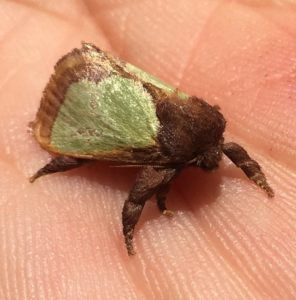
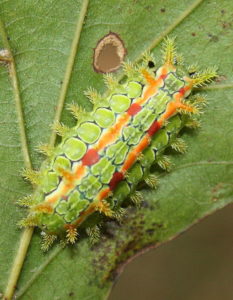 The Spiny Oak Slug (Euclea delphinii) is the caterpillar of an adorable furry little green and brown cup moth (pictured above right). While the caterpillar is really quite beautiful with its intricate designs of yellow and green or brown and orange, the pain from the stings is not at all adorable. These small spiny larvae (growing to only 2 cm long) feed on a wide variety of leaves from deciduous trees, bushes, and vines. In the South, they have 2 generations, one in the Summer, and another active in Fall.
The Spiny Oak Slug (Euclea delphinii) is the caterpillar of an adorable furry little green and brown cup moth (pictured above right). While the caterpillar is really quite beautiful with its intricate designs of yellow and green or brown and orange, the pain from the stings is not at all adorable. These small spiny larvae (growing to only 2 cm long) feed on a wide variety of leaves from deciduous trees, bushes, and vines. In the South, they have 2 generations, one in the Summer, and another active in Fall.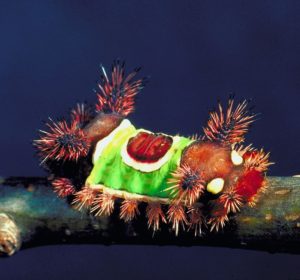
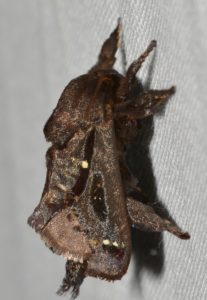 Well, we hope this little mini-guide to stinging Fall caterpillars helps you stay safe out in your yard, garden, and out in area parks in the coming weeks. Though painful at times, they are important herbivores in our native ecosystems, and they really can be quite beautiful and even endearing.
Well, we hope this little mini-guide to stinging Fall caterpillars helps you stay safe out in your yard, garden, and out in area parks in the coming weeks. Though painful at times, they are important herbivores in our native ecosystems, and they really can be quite beautiful and even endearing.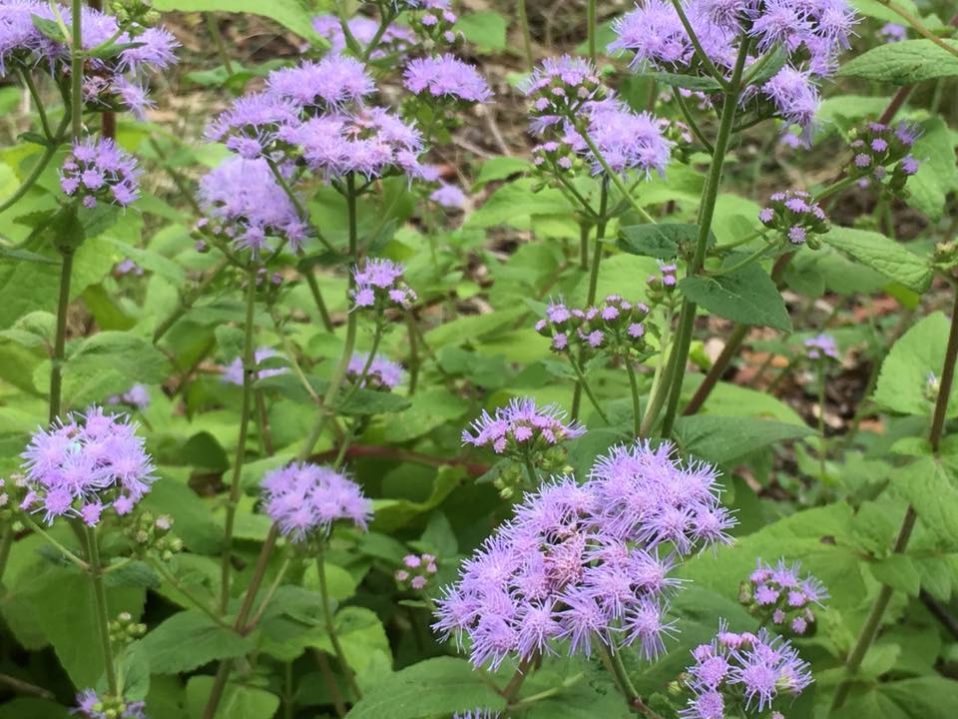
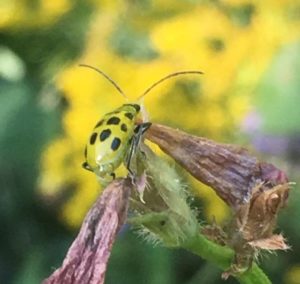 People don’t usually think of beetles as pollinators, but we’ve recently found Spotted Cucumber Beetles (
People don’t usually think of beetles as pollinators, but we’ve recently found Spotted Cucumber Beetles (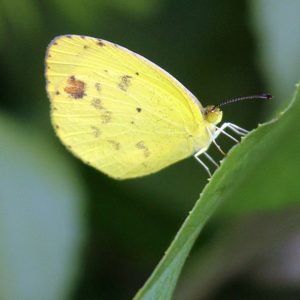
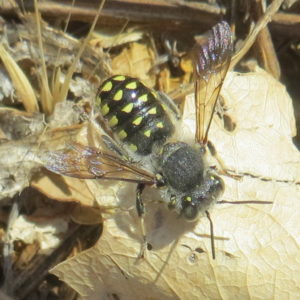 Wool Carder Bees (Anthidium maculosum) are solitary bees, and are just a bit shorter than honeybees, but thicker-bodied. Unlike honeybees, the males males are larger than the females and territorial, and they survive after mating. The females mate with various different males, and establish a nest to lay eggs and raise young by themselves. They are referred to as “carder bees”, because of their habit of gathering plant hairs and fibers to construct their nests.
Wool Carder Bees (Anthidium maculosum) are solitary bees, and are just a bit shorter than honeybees, but thicker-bodied. Unlike honeybees, the males males are larger than the females and territorial, and they survive after mating. The females mate with various different males, and establish a nest to lay eggs and raise young by themselves. They are referred to as “carder bees”, because of their habit of gathering plant hairs and fibers to construct their nests.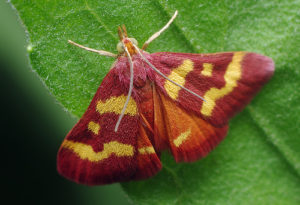
 Well, we hope you enjoyed our mini review of some of the insects that have been visiting our Mistflower, here at the Nature Discovery Center. Also, we hope you will consider this beautiful and robust plant for your own home garden, both as decoration and food for wild pollinators.
Well, we hope you enjoyed our mini review of some of the insects that have been visiting our Mistflower, here at the Nature Discovery Center. Also, we hope you will consider this beautiful and robust plant for your own home garden, both as decoration and food for wild pollinators.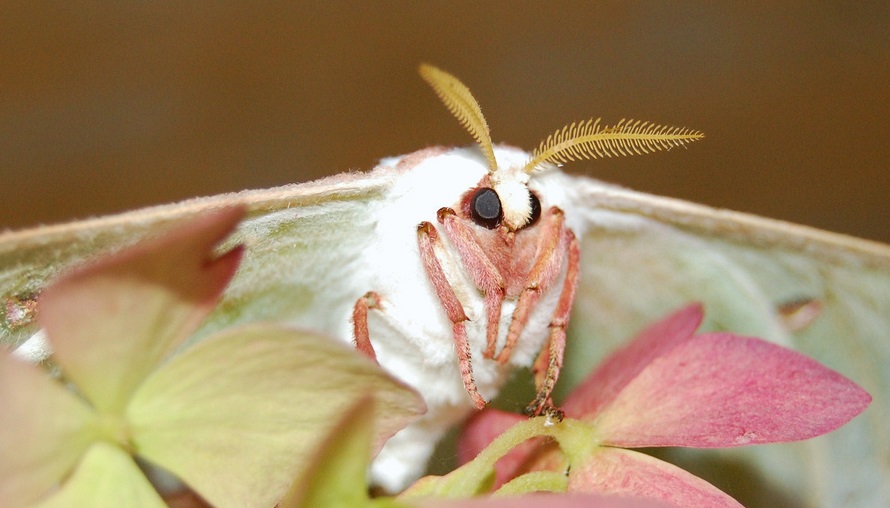
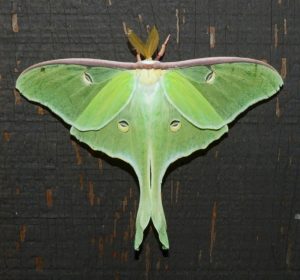 The Luna Moth (Actias luna) is a large nocturnal green moth in the silk moth family Saturniidae. As with most moths in this family, they do not have mouth parts, and thus do not feed as adults, having received all the nutrients they need to carry out their lives, as larvae (caterpillars). This is indeed a large moth, with a wingspan of up to 4.5 inches across. They have long tails on the hind-wings, which give them a swallowtail like appearance. The plump green caterpillars, with small soft spikes and red bumps, feed on a wide variety of tree leaves. They spin a silken cocoon in leaves, where they turn into pupae, and later emerge from, Spring through Summer in the Southern U.S.
The Luna Moth (Actias luna) is a large nocturnal green moth in the silk moth family Saturniidae. As with most moths in this family, they do not have mouth parts, and thus do not feed as adults, having received all the nutrients they need to carry out their lives, as larvae (caterpillars). This is indeed a large moth, with a wingspan of up to 4.5 inches across. They have long tails on the hind-wings, which give them a swallowtail like appearance. The plump green caterpillars, with small soft spikes and red bumps, feed on a wide variety of tree leaves. They spin a silken cocoon in leaves, where they turn into pupae, and later emerge from, Spring through Summer in the Southern U.S.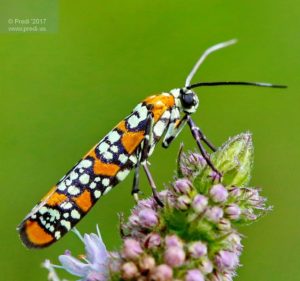
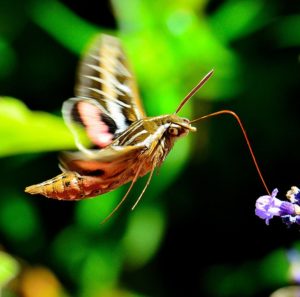
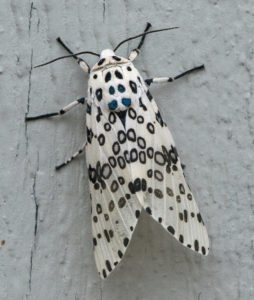

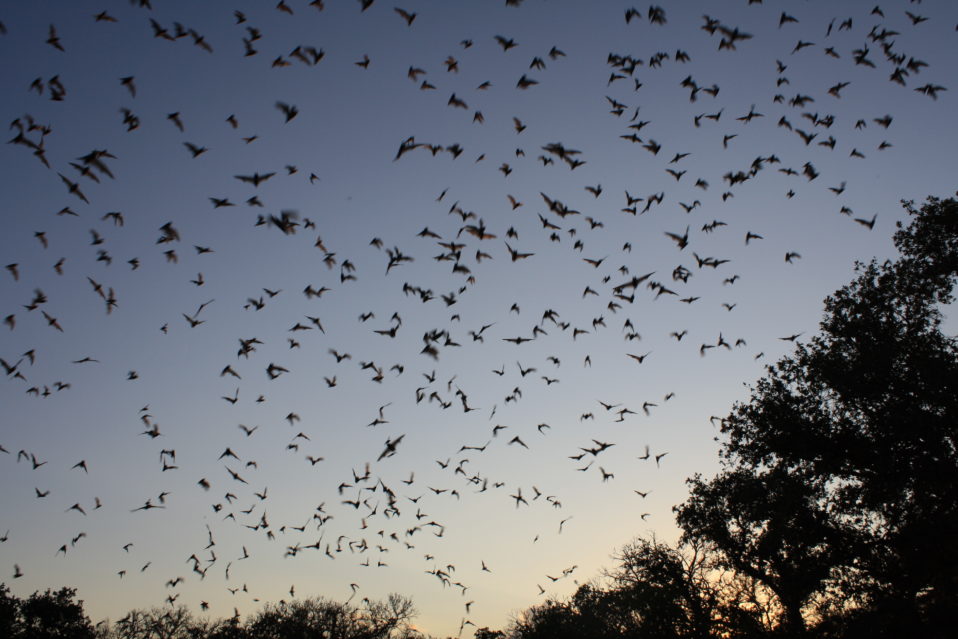
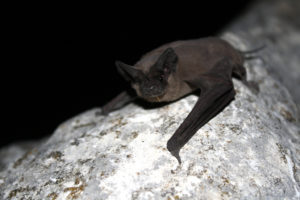


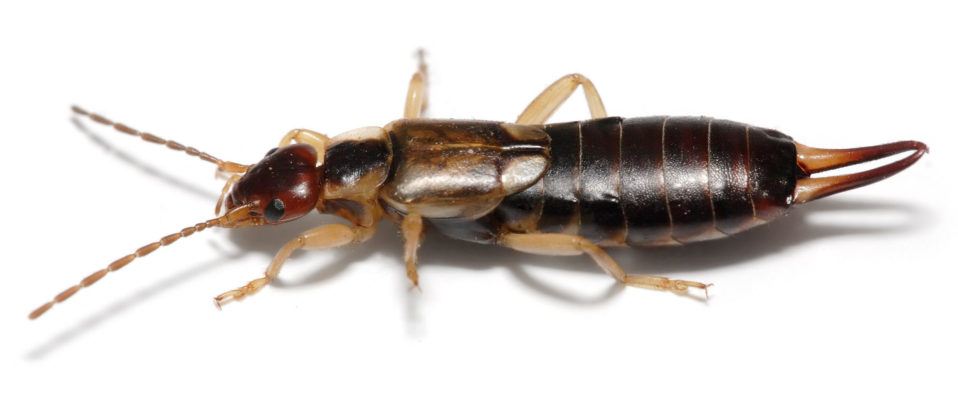
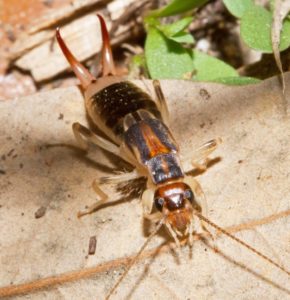 Earwigs (order Dermaptera) are very common little insects, but are somewhat misunderstood. The common name comes from an old and common belief that earwigs crawl into people’s ears… this is not the case! Earwigs live in a variety of natural settings, and occasionally wander into our houses. They are nocturnal and omnivorous (feeding on a wide variety of small invertebrates and plant matter). Because of the pincers on the tail end, they are often misidentified as centipedes, which are not insects, and have longer bodies and many more than 6 legs. The pincers are used to seize prey and defend themselves from each other and other small predators.
Earwigs (order Dermaptera) are very common little insects, but are somewhat misunderstood. The common name comes from an old and common belief that earwigs crawl into people’s ears… this is not the case! Earwigs live in a variety of natural settings, and occasionally wander into our houses. They are nocturnal and omnivorous (feeding on a wide variety of small invertebrates and plant matter). Because of the pincers on the tail end, they are often misidentified as centipedes, which are not insects, and have longer bodies and many more than 6 legs. The pincers are used to seize prey and defend themselves from each other and other small predators.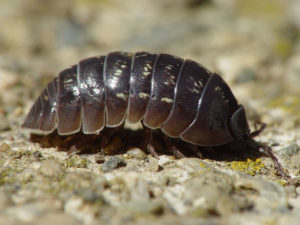
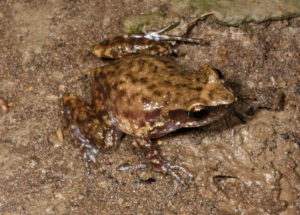
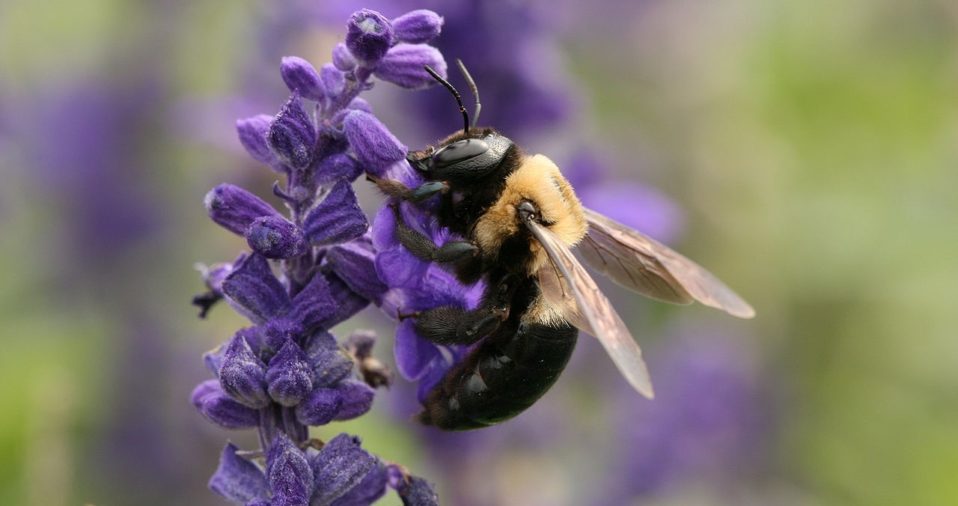
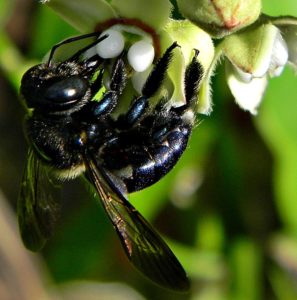

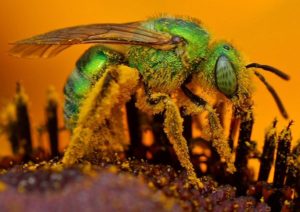
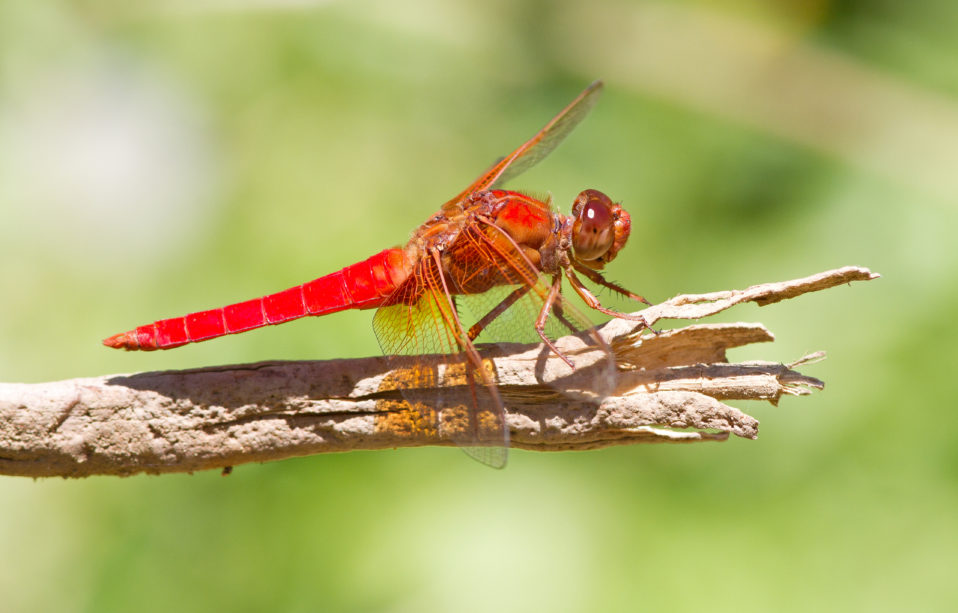
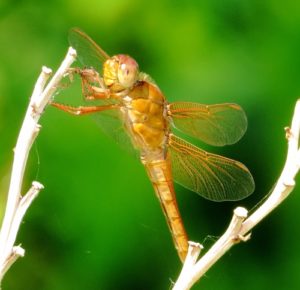 The
The 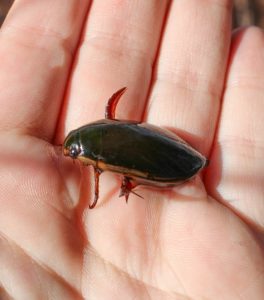
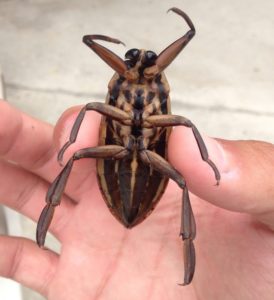 Sometimes called “Toe-biters”,
Sometimes called “Toe-biters”, 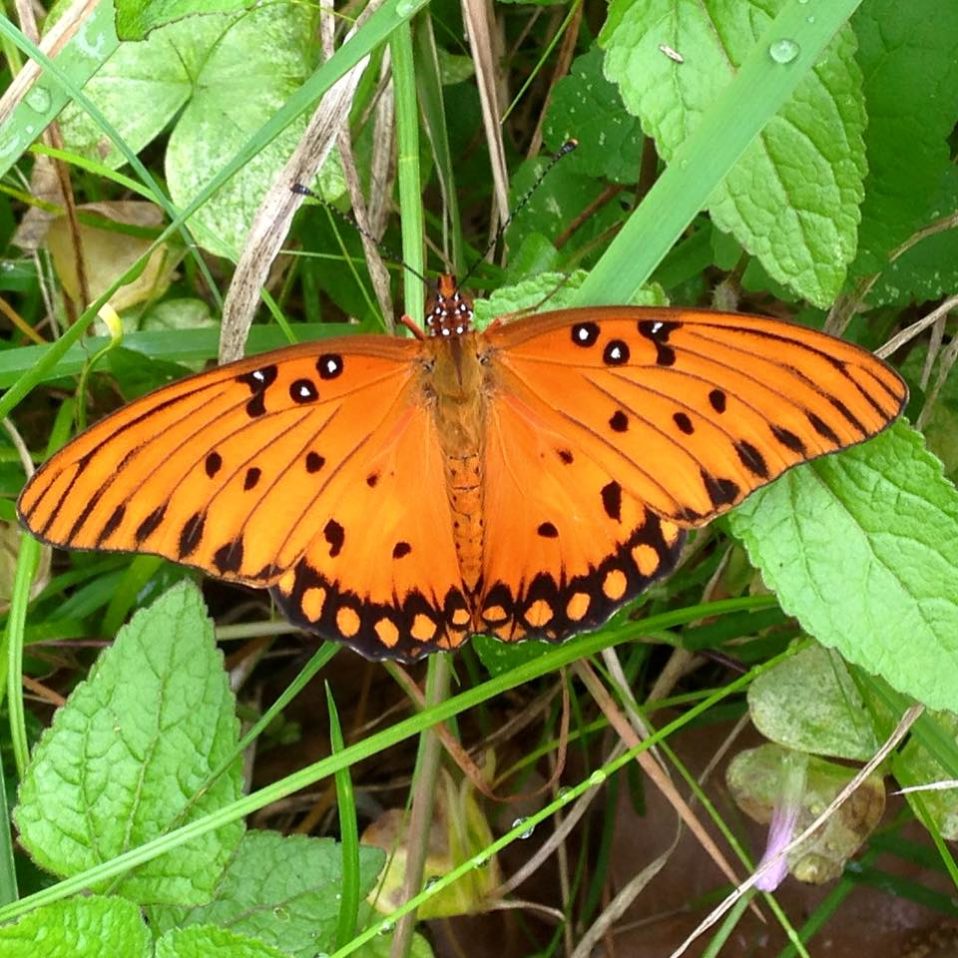
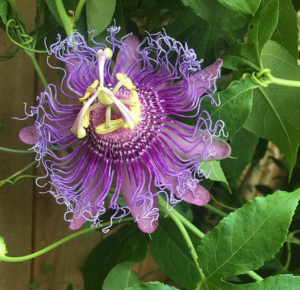 one of our most common butterflies in the park. Not actually related to other fritillaries, these butterflies are actually a kind of longwing or Heliconian butterfly. While the adults will feed on nectar from a variety of flower species, the larvae (caterpillars) will only feed on passionvines (Passiflora spp., Left photo). Passionvine leaves are toxic, and in turn the caterpillars are toxic, as are the adults. The bright orange and black coloration acts as a warning. Gulf Fritillaries have a wingspan of about 3.5 inches.
one of our most common butterflies in the park. Not actually related to other fritillaries, these butterflies are actually a kind of longwing or Heliconian butterfly. While the adults will feed on nectar from a variety of flower species, the larvae (caterpillars) will only feed on passionvines (Passiflora spp., Left photo). Passionvine leaves are toxic, and in turn the caterpillars are toxic, as are the adults. The bright orange and black coloration acts as a warning. Gulf Fritillaries have a wingspan of about 3.5 inches.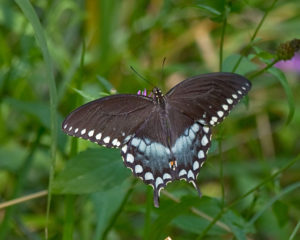
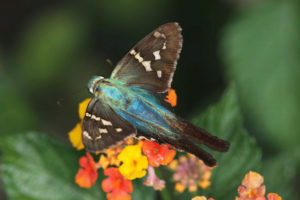
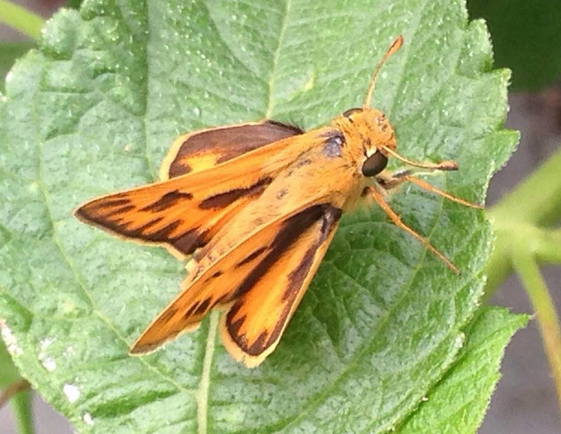
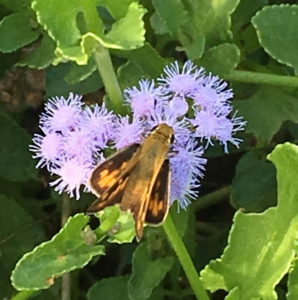
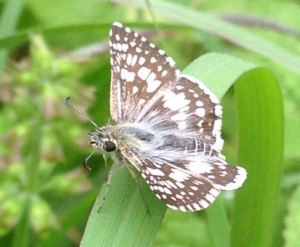
 enal’s Duskywing (Erynnis juvenalis) is one of 2 species of Duskywing (dark colored skippers that keep their wings open and flattened when on a perch), found in our park. The other is the very similar Horace’s Duskywing, though there are many other species of Duskywing across the country. The caterpillars of these skippers feed on oak leaves. They are similar in size to the Checkered skippers, ~3.8 cm wingspan. Duskywings can make themselves rather conspicuous with their darting, climbing, and diving flight patterns, and their habit of sunning out in flat open meadows in plain sight.
enal’s Duskywing (Erynnis juvenalis) is one of 2 species of Duskywing (dark colored skippers that keep their wings open and flattened when on a perch), found in our park. The other is the very similar Horace’s Duskywing, though there are many other species of Duskywing across the country. The caterpillars of these skippers feed on oak leaves. They are similar in size to the Checkered skippers, ~3.8 cm wingspan. Duskywings can make themselves rather conspicuous with their darting, climbing, and diving flight patterns, and their habit of sunning out in flat open meadows in plain sight.